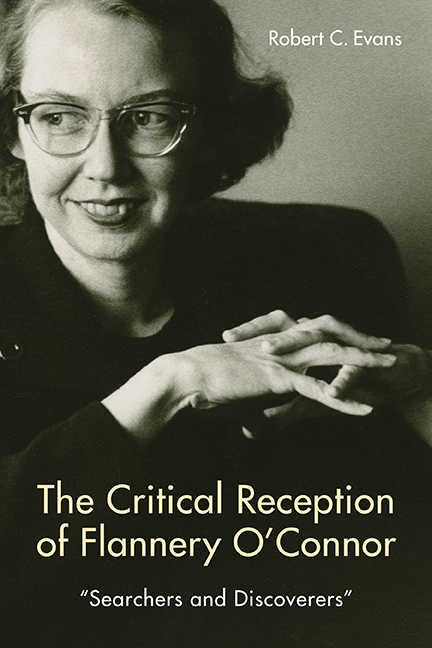Book contents
- Frontmatter
- Dedication
- Epigraph
- Contents
- Acknowledgments
- Introduction
- 1 Aesthetics: Style, Form, Themes, and Characterization
- 2 Religion: Christianity and Catholicism
- 3 History and Historical Contexts
- 4 The South: Heritage and Change
- 5 Race: Blacks and Whites
- 6 Gender: Women and Men
- Conclusion: O'Connor Criticism: What Now? What Next?
- Works Cited
- Index
4 - The South: Heritage and Change
Published online by Cambridge University Press: 15 August 2018
- Frontmatter
- Dedication
- Epigraph
- Contents
- Acknowledgments
- Introduction
- 1 Aesthetics: Style, Form, Themes, and Characterization
- 2 Religion: Christianity and Catholicism
- 3 History and Historical Contexts
- 4 The South: Heritage and Change
- 5 Race: Blacks and Whites
- 6 Gender: Women and Men
- Conclusion: O'Connor Criticism: What Now? What Next?
- Works Cited
- Index
Summary
FLANNERY O'CONNOR identified herself first as a Christian in general and then as a Roman Catholic in particular. She considered her Christian identity eternal: it would not end when her physical life expired. But she also identified as a Southerner. She felt thoroughly “at home” in her region: she embraced many “traditional” Southern values, while questioning or even repudiating some others. The South was, quite simply, the place she knew best—right down to the fingertips she used in writing about it. She knew how Southerners conventionally thought, felt, behaved, and, most importantly, spoke. The language in her stories is not any abstract “English”; it is, most often, Southern English—the kind she had grown up hearing and brings fully alive on the page. Yet even though O'Connor was in all these senses a Southern writer, she thought her writings had universal human relevance. She wrote about her region because she knew it best, but her deepest concerns were with human beings in general, and especially their relations with their Creator.
Robert E. Golden's annotated bibliography gives a fine sense of commentary on O'Connor as a Southerner in her career's first decade. He notes critics’ comments that she usually wrote about the South (13, 19, 22, 23, 34, 41, 44, 48), often in realistic ways (17, 19, 20, 22, 27, 30, 38, 45, 47, 50), as well as claims that she belonged to a distinctive “Southern school” (20, 24, 26, 33–34, 37, 52) sometimes characterized as “Southern Gothic” (22, 24, 32, 36, 38, 51). In fact, in 1952, Newsweek opined that O'Connor had “originated a curious kind of extremely personal fiction, odd little stories about Southerners who were backward but intelligent, brutal but poetic” (SS 9), while John Cook Wyllie, in 1955, saw her as offering “a sophisticate's view of the Deep South” (SS 33), and Sylvia Stallings, also in 1955, praised O'Connor for being “a regionalist in the best sense of that word; that is, she understands her country and its people so well that in her hands they become all humanity” (SS 35).
- Type
- Chapter
- Information
- The Critical Reception of Flannery O'Connor, 1952–2017“Searchers and Discoverers”, pp. 172 - 187Publisher: Boydell & BrewerPrint publication year: 2018



